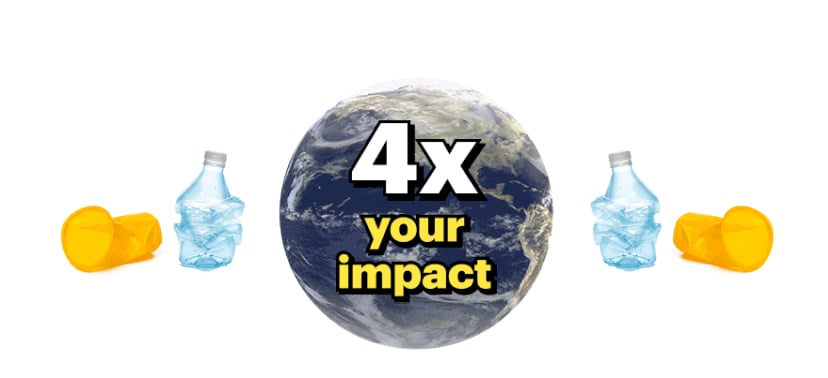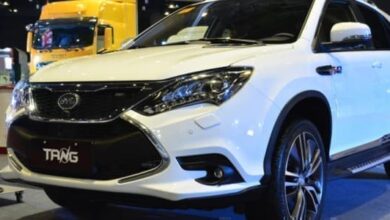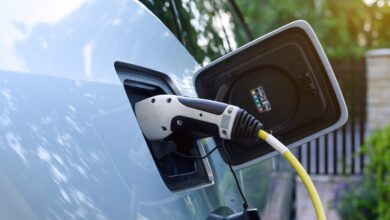Debunking the 5 Worst Myths About Electric Vehicles

Cynical politicians are spreading misinformation on EVs to rail against policy that benefits workers, families, and our planet. Here’s the truth behind their claims.
Editor’s Note: A version of this article originally appeared on the website of Food & Water Action (our affiliated organization) at an earlier date.
As U.S. policy inches toward the changes we need to protect our health and planet, fossil fuel-backed politicians have found a new rhetorical punching bag: electric vehicles (EVs).
In recent years, we’ve seen more policies supporting EVs, including new tailpipe emissions standards and rebates for people buying EVs. These policies will help clean up our air, fight climate change, and boost American manufacturing.
But if you believed what some politicians say about electric vehicles, you’d think they were part of an evil plot to force everyone to buy luxury Teslas and overwhelm our electricity grid. That’s because they’re falling in line with messaging from their allies in the oil and gas industry.
In recent years, the rhetoric on EVs has grown to preposterous levels, with real consequences. Lawmakers are trying to roll back EV-friendly policies, including a bill spearheaded by Senator Ted Cruz — who’s received hundreds of thousands of dollars in donations from the oil and gas industry in recent years.
Yet EV popularity is growing and more people across the country are recognizing their advantages. Several states and their autoworkers are already benefiting from an EV boom, buoyed by the new policies.
Some lawmakers are increasingly turning to misleading arguments and outright lies on EVs. And this is yet another cynical tactic to appeal to dirty energy donors and drum up publicity. So we’re bringing you the truth behind five of their most incredulous claims. For starters …
1. Electric Cars Are A Lot Cleaner Than Gas-Powered Cars
In 2023, Senator Rick Scott claimed that there’s “ample evidence to suggest that EVs are not as clean as people are being led to believe.” He even tried to pass a bill shortened to the “DIRTY CAR EV” Act to study EVs’ climate impact. (It’s no coincidence Scott has a vested interest in several oil companies and received tens of thousands in donations from them).
This is incredibly disingenuous. We’ve known for years that EVs are cleaner than gas-powered vehicles, especially when it comes to air and climate pollution.
Making EVs may take more energy than gas-powered cars. But this excess is quickly made up for once the cars are actually driven, as EVs are much more efficient than gas-powered cars — usually in just less than two years.
As our electric grid transitions to renewables, they will only get cleaner. Back in 2020, life cycle emissions for an EV with 300 miles of range were about half as much as a gas-powered vehicle.
EVs are kinder to our lungs, too. Particulate matter (PM) emissions are much lower from EVs than gas and diesel cars. One study of environmental justice communities in California found that EV adoption would reduce nitrogen dioxide and PM exposure in these communities (low-income communities and communities of color are more likely to live near major highways and suffer from related air pollution).
2. EVs Cost Less to Own and Operate and the Upfront Price Tag Keeps Falling
EV opponents love to frame EVs as luxury vehicles of the coastal elite. But the truth is, electric vehicles are cheaper to maintain than gas-powered ones, and up-front costs are continuing to plummet — in part thanks to rebates passed by the Biden administration. Battery prices are also dropping.
Moreover, charging an electric vehicle is less expensive than fueling at the gas pump, and they cost less to maintain. The Department of Energy found that EVs cost around 40% less per mile than gas-powered cars throughout their lifetime.
3. EVs Fulfill Most of Our Needs on Range — and They Keep Improving
Scare tactics on EVs include images of people stranded on the side of the highway because their battery died. But that’s highly unlikely and will become more unlikely as batteries and charging infrastructure improve.
From 2021 to 2022, EV charging stations worldwide increased by 55%. Biden’s 2021 infrastructure bill set aside $7.5 billion to grow our country’s network of charging stations.
Nevertheless, most drivers and most trips don’t require huge ranges, especially since EVs can charge overnight in homes with a standard plug and outlet. The vast majority of trips we take are short — driving to work, going to school, running errands.
Eighty-five percent of drivers travel less than 100 miles per day by car, while most EVs have a 200-plus-mile range. And manufacturers are continually improving the technology and developing new cars with longer ranges.
4. The Grid Is Ready for Electric Vehicles
Whenever we talk about electrifying anything, industry shills and right-wingers alike proclaim that the grid isn’t ready. They wail that we’re risking blackouts on the grid and blown fuses in our homes. And they’re bringing out the same arguments when it comes to electric cars.
However, multiple studies have found that our grid has the capacity to support EV charging, even given the expected growth in the market. EV charging isn’t that big of an addition to the grid — it uses less electricity than heating our water or heating our homes.
Many of these concerns will be further allayed as we continue toward 100% renewable energy. More solar energy means more energy available for EVs to charge during the day, reducing their already negligible impact on the grid.
5. Electric Vehicles Are a Huge Opportunity for Auto Workers
One of the most-used false claims against EVs is that their growth is a threat to autoworkers and American manufacturing. Former President Donald Trump claims his successor has “ordered a hit job on Michigan manufacturing” with EV incentives. But nothing could be further from the truth.
From 2015-2023, U.S. investments in EV and battery manufacturing created 179,300 new jobs and could create an additional 800,000 indirect jobs to support the growing industry. EV charging infrastructure alone could create over 150,000 jobs by 2032.
In fact, the EV boom is spurring a manufacturing renaissance in many states. For example, since the passage of federal incentives through the IRA, South Carolina has seen 14 EV and battery projects launched, which will create a projected 10,000 new jobs.
Meanwhile, some leaders spurning EVs are keeping jobs out of their state by opposing EV manufacturing. Virginia’s Governor Glenn Youngkin recently stopped plans for a Ford battery plant, which would have created 2,500 new jobs.
We Can’t Let Extremists Undo Progress on EVs
Transportation makes up a full third of U.S. climate pollution. We need massive investment in public transit to address this, but electrifying our transport — along with fully transitioning off fossil fuels — plays an important role in our fight against climate change. On top of that, the EV boom is good for the environment, for consumers, and for American manufacturing and jobs.
But many lawmakers would rather lean into misinformation and shill for dirty energy companies than support policy that benefits their constituents.
Luckily, we have the facts. EVs are cheaper to own and operate and the costs are only going down. They fulfill daily travel needs for the vast majority of people in the U.S., and their range keeps improving. The grid can handle new EVs, and a growing EV industry is creating hundreds of thousands of jobs.
The future is bright for EVs and only getting brighter. We can’t let disingenuous, fossil-backed politicians fool us into thinking otherwise.
Food & Water Watch gives you the news and analysis you need to counter misinformation on our food, water, and climate. Sign up to get our latest updates!

Time to face it —~it’s people or plastics.~We can’t have both.
Become a plastic pollution fighter this Earth~ Day and have your gift MATCHED $3-to-$1!
Enjoyed this article?
Sign up for updates.



